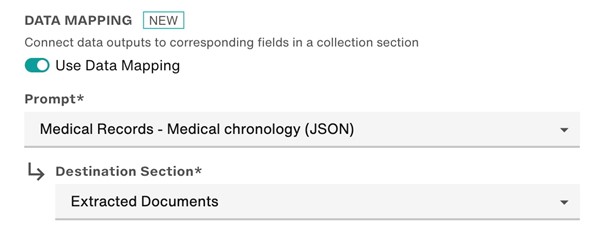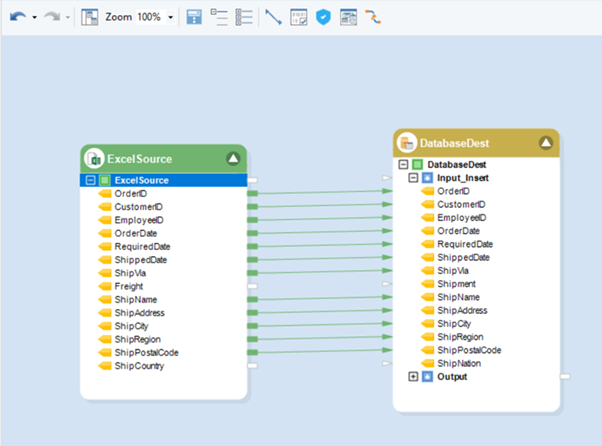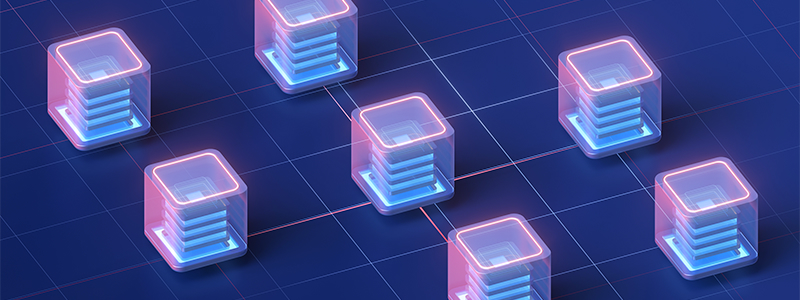
AI Data Mapping: How it Streamlines Data Integration
AI has entered many aspects of data integration, including data mapping. AI data mapping involves smart identification and mapping of data from one place to another.
Sometimes, creating data pipelines manually can be important. The process might require complex transformations between the source and target schemas while setting up custom mappings.
This manual process provides flexibility and helps ensure accurate mappings and transformations – but it can be time-consuming and complex for non-technical users. Data mapping through code is even more technical – requiring knowledge of Python, JSON, and other coding languages. No-code tools greatly streamline the procedure by enabling a drag-and-drop approach to data mapping.
Modern tools go a step further and enable AI-based data mapping. Let’s look at what exactly it is and how teams can seamlessly map data with AI.
What is AI Data Mapping & What Does it Involve?
AI data mapping uses artificial intelligence to automatically generate mappings between source and target schemas for data movement. It can also use machine learning to learn from user-created data for accurate mapping suggestions.
There can be multiple ways of doing this. Some tools require you to input the source and destination fields and then select pre-built prompts for the mapping procedure.

Source: filevine
Other software require you to enter a custom prompt – providing more flexibility. This sends the instructions to an LLM which then proceeds to map the required fields. A simple prompt can look like this:
I will give you two delimited lists of strings, you need to build a map between them based on semantic similarity.
Return results as individual pair name and value separated by comma and the pairs separated by newline and don’t modify the names in lists provided and don’t map the field if they are not provided in any list.
List 1: {0}
List 2: {1}
Where {0} , {1} are the fields names from object
The chosen prompts can be as simple or as complex as possible, depending upon:
- Source file layout.
- Transformations required.
- Semantic differences between the input and output files.
- Final layout.
Benefits of AI Data Mapping
Higher accuracy: AI can recommend highly accurate mappings based on gigabytes of training data. It can also catch human errors like incorrect column matching effectively.
Highly customizable transformations: AI can help merge columns, create nested records, and even compute arithmetic values during mappings.
Time + cost savings and scalability: Users can reuse prompts across files to save time and improve productivity. This reusability also enables them to scale up data integration easily. AT data mapping tools also help save costs as manual mapping can require multiple human resources. AI helps automate this process.
Business-user friendly: No-code AI data mapping tools enables non-technical people to speed up time-to-insight by streamlining the data integration process.
Faster onboarding: AI data mapping reduces pipeline deployment time by automating mapping and integration which, in turn, reduces customer onboarding time. It also minimizes partner onboarding time.
Experience AI Data Mapping with Astera Data Pipeline Builder
Astera Data Pipeline Builder utilizes AI-powered semantic mapping to streamline the data integration process. The AI Automapper feature uses semantic relationships to automatically map fields between differing schemas.
It uses AI to understand the context and meaning of the fields to link related fields, such as “City” and “Country”. This can be done with the click of a single button. Let’s look at the following example:


Within the ADPB UI, users can drag a source into a destination to automatically create maps between similarly named columns. However, columns with different names for the same variable must be mapped manually.
However, by clicking a single button, Link Actions to Create Maps Using AI, users can automatically create maps between semantically same fields, such as ShipCountry and ShipNation.

Now, the fields are correctly mapped. This feature helps map data when the source and destination file are similar with some field name changes.

Users can also use the Smart File Source to deal with dynamic files. Smart Source enables users to transform and map dynamic extracted files to a standardized destination format. It caters to various layouts which can number from two to thousands. It also supports various output formats, such as JSON, csv, and text.
These features enable teams to build and maintain complex data pipelines quickly without any technical help. The outcome?
- Faster client onboarding.
- Reduced time-to-insight.

Read the full case study: https://www.astera.com/type/case-study/a-global-property-and-casualty-insurer/.
Try these features with a 14-day free trial here.
 Astera AI Agent Builder - First Look Coming Soon!
Astera AI Agent Builder - First Look Coming Soon!

